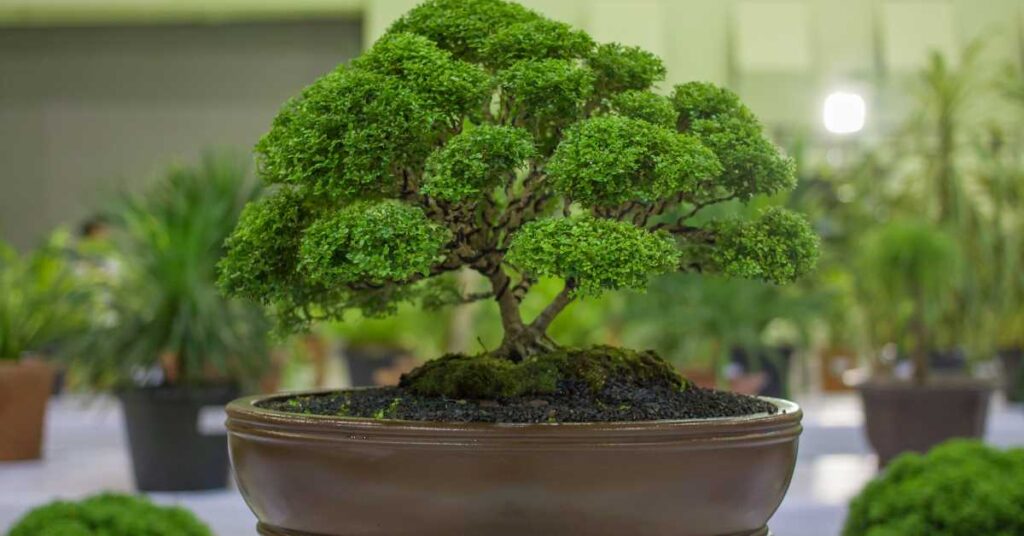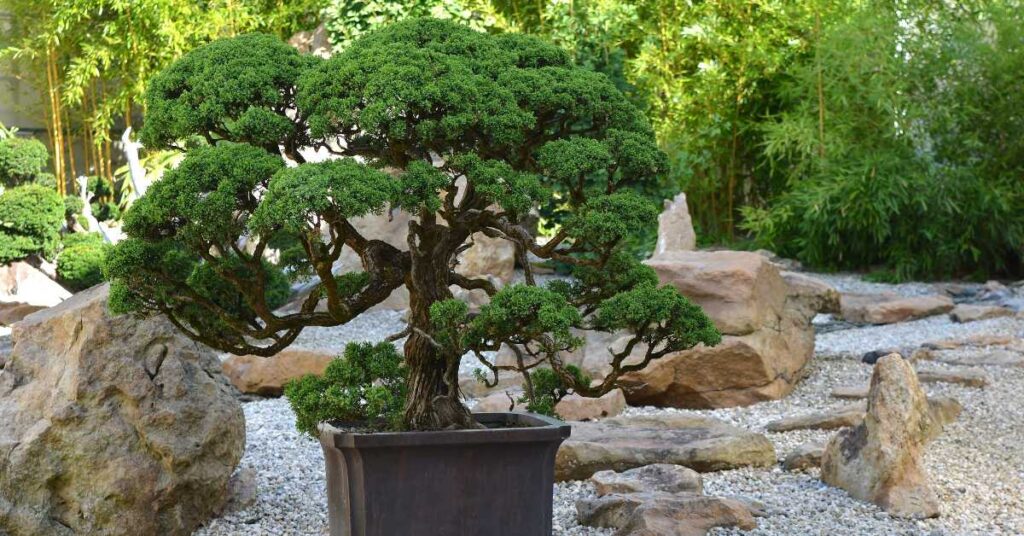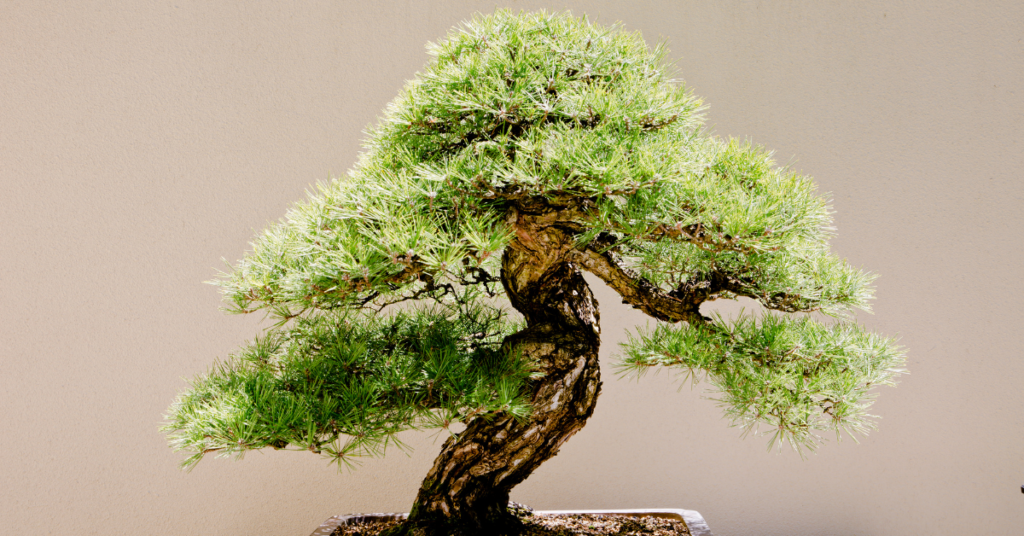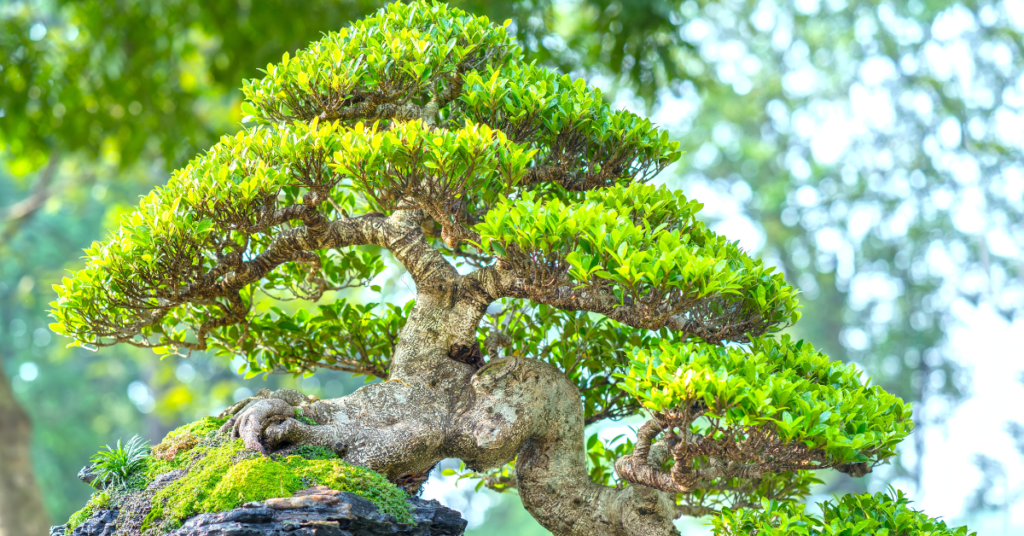Where should you place your bonsai tree at home? You should place it near a window with bright, indirect sunlight (east or west-facing windows work well). Maintain a stable room temperature between 60°F to 75°F (15°C to 24°C) and ensure adequate air circulation. Avoid direct sunlight and extreme temperature fluctuations. Tailor placement to your bonsai’s specific species requirements and monitor its health and growth for adjustments.
If you’re a lover of plants and greenery, then having a bonsai tree at home is an excellent idea. Bonsai trees are not only beautiful, but they also bring a sense of calmness and serenity to your living space.
However, when it comes to placing your bonsai tree at home, there are certain factors you must consider to ensure its healthy growth and longevity.
Firstly, the placement of your bonsai tree should depend on the amount of light it needs. Some species of bonsai trees require direct sunlight while others prefer partial shade. It’s important to research the specific requirements for your particular type of bonsai tree before deciding where to place it in your home.
Additionally, factors such as humidity levels, temperature, and air circulation should also be taken into account when choosing a location for your beloved bonsai tree.
In this article, we will explore all these factors in more detail and help you choose the perfect spot for your bonsai tree at home.
Where Should You Place Your Bonsai Tree At Home?
You should place your bonsai tree in a room that doesn’t get too hot or too cold. Do not place it near a furnace, heater, or an air conditioner as the temperature will not be consistent. You should also place it near a window that gets good light exposure to ensure that it gets plenty of light. These are just a couple of things you should consider.

Here are some more guidelines so it is important to first understand the species of tree you have and what it needs.
Understanding The Needs Of Your Bonsai Tree
As you embark on your journey of bonsai tree ownership, it is important to understand the needs of your new botanical friend. Just like any other living organism, bonsai trees require specific care in order to thrive.
One important factor to consider is watering frequency. Bonsai trees are sensitive to both under and over-watering, so it’s crucial to find the right balance. A good rule of thumb is to check the soil daily for dryness and water accordingly. However, be careful not to water too frequently as this can lead to root rot and ultimately harm your tree.
Another key consideration when caring for your bonsai tree is soil type. The right soil can provide essential nutrients, retain moisture effectively, and promote healthy root growth. Generally speaking, a mix of organic matter like peat moss or coconut coir with inorganic materials such as perlite or grit will provide adequate drainage while still retaining moisture. It’s important to avoid using regular garden soil which may contain harmful pathogens or clay that can suffocate roots.
By understanding the importance of watering frequency and soil type in caring for your bonsai tree, you’ll be well on your way to ensuring its health and longevity. Remember that each species has its own unique requirements so research your specific variety carefully before making any major decisions regarding placement or care.
With patience and dedication, you’ll soon see why bonsai cultivation has been an art form for centuries.

Evaluating Light Requirements
Understanding the needs of your bonsai tree is crucial to ensuring its longevity and growth. One aspect to consider is where to place it in your home.
Bonsai trees require an adequate amount of light, so it’s essential to evaluate the lighting conditions in different areas of your home. When determining the best location for your bonsai tree, consider both natural and artificial light sources.
Natural light provides a full spectrum of colors that are beneficial for your tree’s growth, while artificial light can be adjusted to mimic natural light if necessary. It’s important to note that too much direct sunlight can be harmful to your bonsai, so finding a spot with bright but indirect natural light may be best.
Additionally, adjusting the amount and type of light during seasonal changes can help ensure optimal growth and health for your bonsai tree.
Determining The Ideal Temperature Range
As you have already determined the ideal location for your bonsai tree, it’s time to consider the temperature range. The optimal temperature for a bonsai tree varies depending on its species, but most of them thrive in temperatures between 60-75°F. Temperature variations can cause stress to the tree, which can lead to stunted growth and even death.
To ensure that your bonsai tree is healthy and thriving, here are some tips on determining the ideal temperature range:
- Keep your bonsai tree away from drafty areas such as doors.
- Avoid placing your bonsai tree near heating or cooling vents.
- During hot summer months, keep your bonsai tree in a shaded area to prevent overheating.
By following these tips, you can help maintain an ideal temperature range for your bonsai tree, which will promote healthy growth and longevity. Remember that temperature control is just one factor in caring for a bonsai tree, so be sure to research and learn about all aspects of proper care.
Balancing Humidity Levels
To keep your bonsai tree healthy and thriving, it is essential to balance the humidity levels. This can be achieved by using humidifiers in the room where the bonsai is placed.
Humidity levels that are too low can cause the leaves to turn yellow and dry out, while high humidity levels can lead to fungal growth and root rot. By monitoring the humidity levels and adjusting accordingly, you can ensure that your bonsai tree stays healthy and beautiful.
Another way to balance humidity levels is by choosing appropriate containers for your bonsai tree. Containers made of porous materials such as clay or terracotta are ideal because they allow for proper drainage and air circulation. Avoid containers made of plastic or metal as they may not provide enough ventilation, leading to stagnant air and increased risk of disease.
Additionally, make sure the container size is appropriate for your bonsai tree’s roots; a container that is too small will restrict root growth, while one that is too large may hold excess water, leading to root rot. By following these tips, you can create a balanced environment that promotes the health and growth of your beloved bonsai tree.
Considering Air Circulation
When it comes to placing your bonsai tree at home, airflow considerations should not be taken lightly. Bonsai trees require a certain level of air circulation in order to thrive and grow properly. Therefore, before you decide on the perfect spot for your bonsai tree, it is important to take a moment to consider the airflow in your home.
Placement restrictions can often hinder the amount of air circulation necessary for a bonsai tree. To ensure that your tree receives adequate air circulation, avoid placing it in cramped spaces such as corners or narrow hallways. Instead, opt for an open area where there is ample space for air to flow around the tree.
Additionally, placing your bonsai near an open window or door can also help increase airflow and promote healthy growth.
- Consider placing your bonsai near a ceiling fan or other source of gentle breeze.
- Avoid placing your bonsai in areas with stagnant air such as basements or closed-off rooms.
- If possible, place your bonsai in an area where it can receive indirect sunlight throughout the day.
Remember that proper air circulation is crucial to maintaining the health and vitality of your bonsai tree. By taking the time to consider airflow considerations and placement restrictions, you can create an ideal environment for your beloved plant to flourish and thrive.
Choosing The Right Room
Now that we have discussed the importance of air circulation in placing your bonsai tree, let’s move on to considering the right room for it. Room layout and decor integration are crucial factors to take into account when deciding where to place your bonsai tree.
Firstly, consider the room layout. Your bonsai tree should be placed in a spot where it can stand out but not obstruct any pathways or doorways. It should also be placed away from any direct sunlight or sources of heat that may damage the plant. Additionally, consider the height of the table or stand where you will place your bonsai to ensure that it is at eye level and easily accessible for watering and pruning.
To further aid you in visualizing where to place your bonsai tree in relation to other elements in the room, here is a table showing different types of rooms and suggested locations for your bonsai:
| Room Type | Suggested Location |
|---|---|
| Living Room | On a coffee table or side table near a window |
| Bedroom | On a dresser or bedside table |
| Study/Office | On a desk or bookshelf |
| Kitchen/Dining Area | On a windowsill or small table |
| Bathroom | On a shelf or small stool |
Incorporate these suggestions with your personal preferences and style to integrate your bonsai tree seamlessly into your home decor. Keep in mind that a well-placed bonsai can add life and beauty to any space while providing tranquility and relaxation.
Finding The Best Placement Within A Room
When it comes to finding the best placement for your bonsai tree, there are a few things to consider. One important factor is feng shui, which is the ancient Chinese practice of arranging objects in a way that promotes positive energy flow.
According to feng shui principles, placing your bonsai tree in the southeast corner of a room can bring wealth and prosperity. Another consideration when choosing where to place your bonsai tree is decorative options. If you have a large, statement-making bonsai tree, you may want to make it the centerpiece of the room by placing it on a pedestal or stand.
On the other hand, if you have smaller bonsai trees, you may want to group them together on a shelf or window sill for maximum impact. By taking these factors into account and experimenting with different placements, you can find the perfect spot for your bonsai tree that enhances both its beauty and energy in your home.
Tips for Finding the Best Placement:
- Consider feng shui principles when deciding where to place your bonsai tree.
- Use decorative options such as pedestals or grouping with other plants for added visual interest.
- Experiment with different placements until you find what looks and feels best in your space.
Avoiding Common Placement Mistakes
After finding the best placement within a room, it’s important to also consider some common placement mistakes that could harm your bonsai tree.
For instance, placing your bonsai near heating or cooling vents can cause it to dry out quickly or expose it to sudden temperature changes. Similarly, placing it in direct sunlight for extended periods of time could lead to leaf burn and damage.
Another factor to consider when placing your bonsai is the container you choose. Choosing containers that are too small can restrict the growth of the roots and limit water retention, while containers that are too large can make it difficult to regulate soil moisture levels. Additionally, choosing shallow containers can also affect how often you need to water your bonsai. It’s important to find a container that provides ample space for root growth and allows for proper drainage.
When it comes to watering techniques, it’s important to avoid overwatering or underwatering your bonsai. Overwatering can lead to root rot and fungal growth, while underwatering can cause leaves and branches to wilt and die off. It’s recommended to water your bonsai once a week during growing season and once every two weeks during dormant season. However, this may vary depending on factors such as humidity levels and the size of your container.
Proper placement, container choice, and watering techniques are all important factors in maintaining a healthy bonsai tree. By avoiding common mistakes and implementing these practices, you can ensure that your bonsai thrives in its new home.

Caring For Your Bonsai Tree In Its New Location
Your bonsai tree is like a delicate flower that requires the right environment to flourish. Now that you have found the perfect spot for it in your home, it’s time to focus on caring for it properly.
Here are some tips on how to keep your bonsai healthy and happy in its new location.
First, let’s talk about watering techniques. Bonsai trees require a steady and consistent level of moisture, but overwatering can be just as harmful as underwatering. It’s important to check the soil daily and only water when the top layer feels dry to the touch.
When you do water, make sure to saturate the soil thoroughly so that all roots receive enough hydration. Remember not to let your bonsai sit in standing water, as this can lead to root rot.
Additionally, pay attention to humidity levels in your home and consider using a humidity tray or misting the leaves occasionally for added moisture. As for soil requirements, bonsai trees need well-draining soil that allows air circulation around the roots. Consider using a specialized bonsai soil mix or adding perlite or sand to regular potting soil for better drainage.
Following these watering techniques and ensuring proper soil requirements will give your bonsai tree the best chance at thriving in its new location. With patience and care, you will soon see it begin to grow and flourish before your eyes!
Enjoying The Benefits Of A Beautiful And Healthy Bonsai Tree
When it comes to displaying bonsai, the placement of the tree is essential. Bonsai trees require plenty of sunlight, so it’s best to place them near a window where they can receive at least six hours of direct sunlight each day.
However, be mindful that too much direct sunlight can harm your bonsai’s leaves, so you may need to adjust its position according to the time of day and season.
Additionally, keep in mind that indoor temperatures should be consistent and moderate for your bonsai tree to thrive. Avoid placing it near drafty windows or heating/cooling vents that can cause fluctuations in temperature.
With proper care and attention to its placement, your bonsai tree will not only enhance your home’s beauty but also provide you with a sense of peace and tranquility. Moreover, a well-maintained bonsai makes an excellent gift option for loved ones who appreciate nature and artistry.
Frequently Asked Questions
Can I Place My Bonsai Tree Outside In Colder Temperatures?
As the winter breeze howls, it’s important to consider outdoor bonsai care during cold temperatures.
Winter bonsai care is crucial for ensuring the longevity of your miniature tree, as frost and snow can damage its delicate branches and leaves.
To keep your bonsai thriving, avoid placing it in areas with harsh winds or direct sunlight. Instead, find a sheltered spot with plenty of natural light and keep an eye on soil moisture levels.
Remember, proper outdoor bonsai care is essential for maintaining its beauty and grace throughout the seasons.
Should I Keep My Bonsai Tree Away From Heating Or Cooling Vents?
When it comes to bonsai tree placement, it’s important to consider indoor temperature control. You should keep your bonsai tree away from heating or cooling vents to ensure that it doesn’t experience extreme temperature changes that could harm its health.
While it may be tempting to place your bonsai tree in a spot where you can admire it frequently, you should prioritize its well-being by finding a location that is not affected by drastic temperature fluctuations.
By doing so, you can help your bonsai tree thrive and maintain its beauty for years to come.
How Often Should I Rotate My Bonsai Tree For Even Growth?
Just like how the hands of a clock rotate around its face, your bonsai tree also needs rotation to ensure even growth.
The benefits of pruning will only be maximized if you rotate your tree regularly.
But when is the best time to rotate? The answer depends on the season and the direction of light that your bonsai receives.
If it’s during winter, then rotating every 3-4 weeks is ideal while during summer, every 1-2 weeks.
Remember that a healthy bonsai doesn’t just grow straight up but rather in all directions, hence rotation is crucial for balanced growth.
Can I Place My Bonsai Tree On A Windowsill With Direct Sunlight?
If you’re wondering whether it’s okay to put your bonsai tree on a windowsill with direct sunlight, there are some things to consider.
On the one hand, having your tree in a spot where it gets ample sunlight can be great for its growth rate. However, if the sun is too strong or too direct, it could cause damage to the leaves or even burn them.
Additionally, depending on the placement of your windowsill, the temperature and humidity levels could fluctuate quite a bit throughout the day, which might not be ideal for your bonsai’s overall health.
So while windowsill positioning can have its pros and cons when it comes to bonsai tree placement and sunlight exposure, it’s important to choose a spot that strikes the right balance between light and protection for optimal growing conditions.
Is It Recommended To Place My Bonsai Tree Near Other Plants In My Home?
When considering the placement of your bonsai tree, it’s important to think about the benefits of companion plants as well as the potential risks of planting bonsai with other plants.
Companion plants can help improve soil quality, provide shade or support, and even repel pests. However, it’s important to choose companion plants that have similar light and water requirements to your bonsai tree.
Planting with incompatible plants can lead to competition for resources, disease spread, or root damage. Be sure to research and carefully select companion plants if you decide to plant your bonsai with other greenery in your home.
Conclusion
So, where should you place your bonsai tree at home? It ultimately depends on the type of bonsai tree you have and your home environment.
Consider factors such as temperature, sunlight exposure, and proximity to other plants.
While some bonsai trees can tolerate colder temperatures, it’s generally recommended to bring them indoors during harsh winter months. Additionally, keeping your bonsai away from heating or cooling vents can prevent extreme fluctuations in temperature that could harm your plant.
Remember to rotate your bonsai regularly to ensure even growth and prevent it from leaning towards one side due to uneven sunlight exposure.
But here comes the suspense… While placing your bonsai on a windowsill with direct sunlight may seem like a great idea, be cautious of how much direct sunlight it receives. Too much sunlight can scorch the leaves and damage your plant.
Finally, while it may be tempting to place your bonsai near other plants for aesthetic purposes, make sure they are compatible and won’t compete for nutrients or light.
Overall, finding the perfect spot for your bonsai tree requires careful consideration of its specific needs and surroundings. Take the time to research and observe how it responds in different locations before settling on a final spot.
Your patience will pay off with a healthy and thriving addition to your home!



